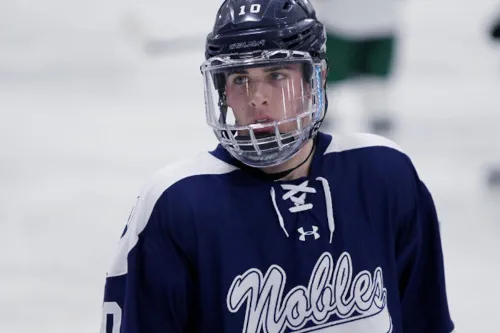Trevor’s comeback from hip impingement
Sharp pain was the first sign that Trevor had one of the most common ice hockey injuries: hip impingement. Less than a year after surgery, he completed his first Ironman triathlon.
Ice hockey has a reputation as a dangerous sport. In recent years, however, USA Hockey has implemented rules that emphasize safety, fair play, and respect. Those changes — and improvements in protective equipment — have reduced the risks for young players while maintaining the excitement of the game.
In youth hockey, many injuries are minor bruises, muscle strains, and cuts. Serious injuries, such as concussions and fractures, are often the result of overly aggressive playing while others are overuse injuries.

Sharp pain was the first sign that Trevor had one of the most common ice hockey injuries: hip impingement. Less than a year after surgery, he completed his first Ironman triathlon.
Protective ice hockey gear is essential. It can be expensive, but it’s often possible to find good used equipment. See if your league holds a “skate swap” or if older players are offering hand-me-downs to younger players.
As the largest and most experienced pediatric and young adult sports medicine practice in the country, the Sports Medicine Division at Boston Children's combines personalized care with innovative treatment for each athlete we treat. Whether injury prevention or recovery is your goal, we have the skills and dedication to help your child remain active in the sports they love.
Our Sports Medicine team consists of sports medicine physicians, orthopedic surgeons, physician assistants, nurse practitioners, physical therapists, podiatrists, athletic trainers, sports psychologists, dietitians, and many others who collaborate in every aspect of our patients’ care and their recovery.
The Micheli Center for Sports Injury Prevention, part of the Sports Medicine Division, offers practical strategies to help young athletes reduce their risk of injury while enhancing their sports performance. After a sports injury, our rehabilitation and strength training programs help athletes return to play stronger and healthier.